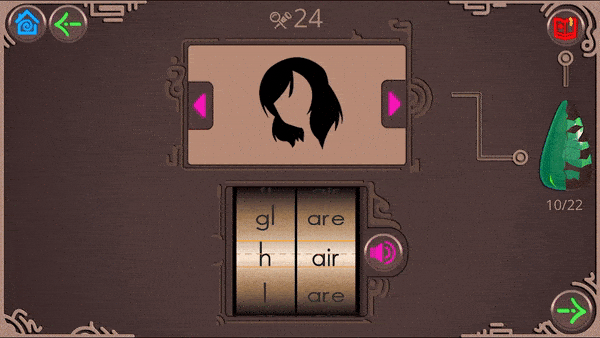English
The Best Way to Improve Your English Pronunciation (For a Natural-Sounding Accent!)

Let’s say you and your friends are having dinner at a restaurant.
When the waiter comes over, he asks you:
“What can I get you this evening?””
Say you want steak tartare with Worcestershire sauce, but you don’t know how to pronounce it.
Having a fear of making a mistake in front of your friends prevents you from ordering confidently.
You’ll learn how to improve your pronunciation, reduce your accent, understand the overall flow of English, and sound more like a native… All by yourself, wherever you live.
Part One: Understanding the “Pieces” of English Pronunciation
Consider how you learned your native language to understand the “big picture” and “pieces” of pronunciation.
As a child, you had to hear and understand your parents’ messages.
Different speakers – and pronunciations – were also heard!
- Parents
- Grandparents
- Siblings
- Cousins
- Teachers
- Friends of yours
- Cartoons and movies
- etc…
You gained a sense of the overall “flow” and “sound” of your native language, learned how to distinguish sounds, and developed your own ideal voice and accent.
The fact that many English students have only one teacher can make students feel under pressure to sound like their teacher, making their pronunciation sound forced and unnatural.
Also, native English speakers usually speak too slowly and unnaturally, often using words that non-natives do not use.
Consequently, many English students have little exposure to real English, aren’t learning systematically, and lack the variety necessary to develop a proper accent and intonation.
My real secret to excellent pronunciation I learned from teaching people how to speak English fluently is:
A great LISTENING ability automatically leads to natural pronunciation.
To develop natural English pronunciation, follow these steps:
Activate your listening skills with “Sound Transitioning”

Listening actively
Individual sounds are the foundation of great pronunciation.
What would you do if I played you a note on the piano, then asked you to play the same note?
It is likely that you would start pressing keys until you found the right note if you didn’t know how to play the piano.
However…
In addition to testing and trying each note, you are also learning:
- Relationship between notes
- The scales
- The octaves
- The pitch
Active listening through experimentation – what I call “sound transitioning” – trains you to recognize and distinguish sounds.
You learned your native language this way as a child.
In English, you should test, try, and mimic sounds the same way.
Start with a sound you are able to make, and then “transition” by moving your mouth, tongue, and voice in different ways until you naturally reach the sound you desire.
If you’re wondering… yes, you’re doing this alone.
Once you hit the target, you’ll know exactly how to make the right sound whenever you want.
With Fluent for Life, intermediate to advanced English learners are guaranteed fluency in English.
If you know a lot of English but have difficulty speaking it…
Find out more about Fluent for Life
Systematically learn the sounds of English
Next, many learners tell me that English pronunciation is inconsistent. There are a lot of variables involved, and it can seem like there is no logic to it!
What if I told you that pronunciation rules work over 80% of the time?
Pronunciation is actually easier than most people think, and when you understand the whole system like natives do, you understand how everything works.
In the previous lesson, you learned how to produce the correct sound by using “sound transitioning.” Now let’s look at how to learn English sounds systematically.
English Phonics: The Sound Rules
There are two types of English words: rules-based words and rule-breaking words.
Words that break the rules of phonics are called “sight words,” since they must be remembered by their appearance.
These “rule-breakers” will be covered in a moment, but it’s possible to quickly learn the system for both kinds of words.
The following words follow phonetic rules:
- bag
- big
- bug
If you know the phonetic rules for these words, then you know how to pronounce them.
Since it’s easier to learn these rules by hearing them, I created an app called Frederick to help you improve your listening and pronunciation.

You should learn sounds in the right order rather than with YouTube videos that teach you the pronunciations of random words, because the incorrect order can confuse or overwhelm you.
It is for this reason that Frederick takes you from the alphabet to advanced words like “synthesis” and “apocalypse” step by step. The Frederick app lets you compare sounds systematically as quickly as possible, just like a piano. Additionally, the app allows you to use “sound transitioning” as you compare sounds.
In your mind, learning the sounds of each letter and how they work together forms a strong connection between words and sounds.
Furthermore, Frederick gives you the same training you would receive from a personal pronunciation coach – but this training is unlimited, so you can access it whenever you want!
The Pronunciation of “Rule-Breakers” – Sight Words
About 20% of words are SIGHT WORDS. These words break phonetic rules, so you remember how they sound by seeing them.
As an example:
We can “decode” the pronunciation rules of the word “THANK” as “th-a-nk.”
A sight word would be “THE.” Although the “e” sounds different from what we might expect, the word as a whole does follow a rule.
But don’t worry… You’ll hear, see, and use the most common sight words so often that you’ll automatically learn them.
Frederick teaches you the rules of phonics, as well as exceptions to sight words.
Part Two: Getting the “Flow” of English
After learning individual sounds, it’s time to start blending words so you sound more native.
Frederick helps you do this with a variety of naturally spoken sentences.
However, let’s examine some examples to see how blending words changes the sound.
Phrases, contractions, and sound blending

Overpronouncing words is a common mistake that will make you sound like a robot.
By learning English phrases, you can speak like a native. An example would be:
“As opposed to…”
This is a very polite way of saying “not this, but that.”
When native speakers say the phrase, it sounds more like: “aza pose to…”
If you say this blended speech slowly, you’ll sound more like a native! 🙂
Native Americans also use contractions when they speak, such as:
It’s “textbook,” formal English.
However, natives almost always use the contraction – I’ll go.
When natives speak quickly, they sound more like – algorithms.
As you get more examples, you will develop a sense of when to blend sounds.
Let’s take this a step further and show you the same variety of examples natives see.
The Fluent for Life program guarantees intermediate to advanced English fluency.
You know a lot of English, but can’t speak it…
Find out more about Fluent for Life
Learn Native Pronunciation
It’s time to take your English pronunciation to the next level, and have people asking if you’re an English speaker! 😉
Every English speaker has a distinctive voice and accent, so your goal should be to find the best voice FOR YOU in English, which will help you feel more confident and comfortable speaking.
This technique will help you improve your listening and pronunciation the native way. You will listen to different examples of the same speech.
Here are three versions of “Help” by The Beatles:
- The original
- The punk version — from the movie “Yesterday”
- The country version — performed by Miley Cyrus
This exercise can be done with any song, speech, or topic that interests you.
Besides improving your pronunciation, this method will also improve ALL aspects of your fluency!
Improve Your Pronunciation Today
Listening and pronunciation are intertwined.
Here are some tips for improving your pronunciation:
- With Frederick, you can practice Sound Transitioning, Phonics, and Sight Words.
- Listen to a variety of native speakers saying the same thing to learn phrases and how they blend words together.
Fluent For Life guarantees improvement in your English fluency beyond pronunciation.
Hundreds of examples of native speakers from all over the English-speaking world are provided in this program to help you develop a natural accent in English. The program guarantees better speech within 30 days or less, and its easy-to-follow structure teaches you English like a native speaker.

